Amaranthaceae is a family of flowering plants commonly known as the amaranth family, in reference to its type genus Amaranthus. It now includes the former goosefoot family Chenopodiaceae and contains about 165 genera and 2,040 species in the world!
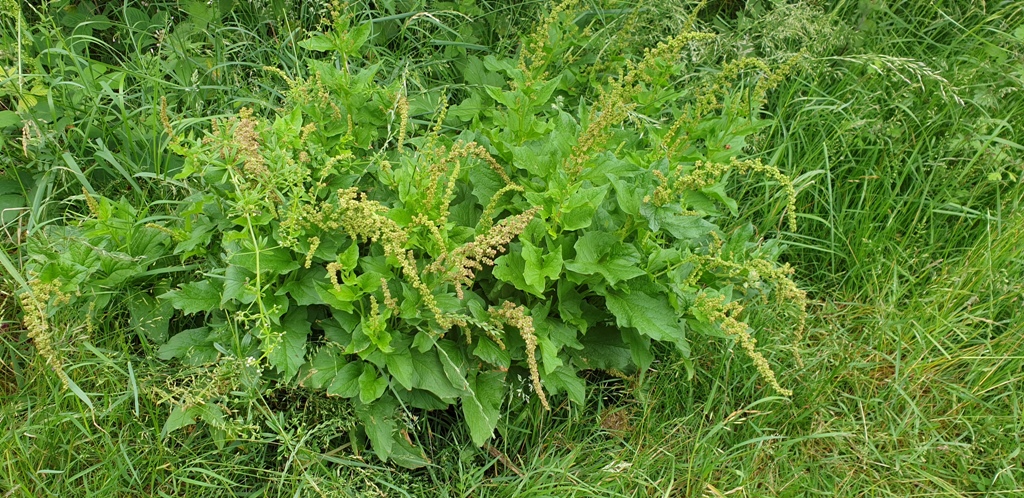
It is not an obviously attractive family but as always when you delve further in all those families there are some fascinating members!
In Stace, 12 genera are described of which many are introduced by accident through wool, soya bean waste, as birdseed and other sources.
The less common, introduced genera + species will briefly be mentioned on the next page as well as our more common, native species.
Click links of the plants in the contents below for more info and pictures from various websites. Scientific/Latin Name usually has a link from the Online Atlas of the British Isles and Irish Flora. Pink background means a warning (such as poisonous!) or medicinal use, green for edible, ornamental or other uses and blue for habitat where it can be found in B.I. , for interesting facts or for wildlife use. Pictures from Wikipedia or Mike Poulton and edited information mainly from PFAF and Wikipedia.
Contents:
Dysphania spp or Goosefoots
Dysphania botrys or Jerusalem oak goosefoot
D. ambrosioides or Jesuit’s tea
‘Chenopodium‘ spp. or Goosefoots
Chenopodium album agg. or Fat Hen
Chenopodium ficifolium or Fig-leaved goosefoot
Chenopodium vulvaria or Stinking Goosefoot
Chenopodium bonus-henricus or Good King Henry
Oxybasis glauca or Oak-leaved Goosefoot
Oxybasis rubra or Red Goosefoot
Oxybasis chenopodioides or Saltmarsh Goosefoot
Chenopodiastrum murale or Nettle-leaved Goosefoot
Chenopodiastrum hybridum or Maple-leaved Goosefoot
Lipandra polysperma or Many-seeded Goosefoot
Salicornia and Sarcocornia or the Glassworts
Salicornia ramosissima or Purple Glasswort
Salicornia procumbens agg or Yellow Glasswort
Salicornia europaea or Common Glasswort
Salicornia pusilla or One-flowered Glasswort
Sarcocornia perennis or Perennial Glasswort
Suaeda maritima or Annual Sea-blite
Suaeda vera or Shrubby Sea-blite
Salsola kali or Prickly Saltwort
Salsola tragus or Prickly Russian thistle
Atriplex spp. or Oraches
Atriplex prostrata or Spear-leaved Orache
A. praecox or Early Orache
A. patula or Common Orache
A. littoralis or Grass-leaved Orache
A. glabriuscula or Babington’s Orache
A. longipes or Long-stalked Orache
A. laciniata or Frosted Orache
A. portulacoides or Sea-purslane
A. pedunculata or Pedunculate Sea-purslane
Beta vulgaris or Sea Beet
and subsp. maritima: subsp. cicla; subsp. vulgaris
Amaranthus spp. or Pigweeds
Amaranthus retroflexus or Common Amaranth/Callaloo
A. hybridus or Green Amaranth, Callaloo
A. ozanonii (A. retraflexus x A. hybridus)
A. caudatus or Love-lies-bleeding
A. albus or White Pigweed
Dysphania spp or Goosefoots
Former species are now only mentioned in Stace and two neophytes are described below.
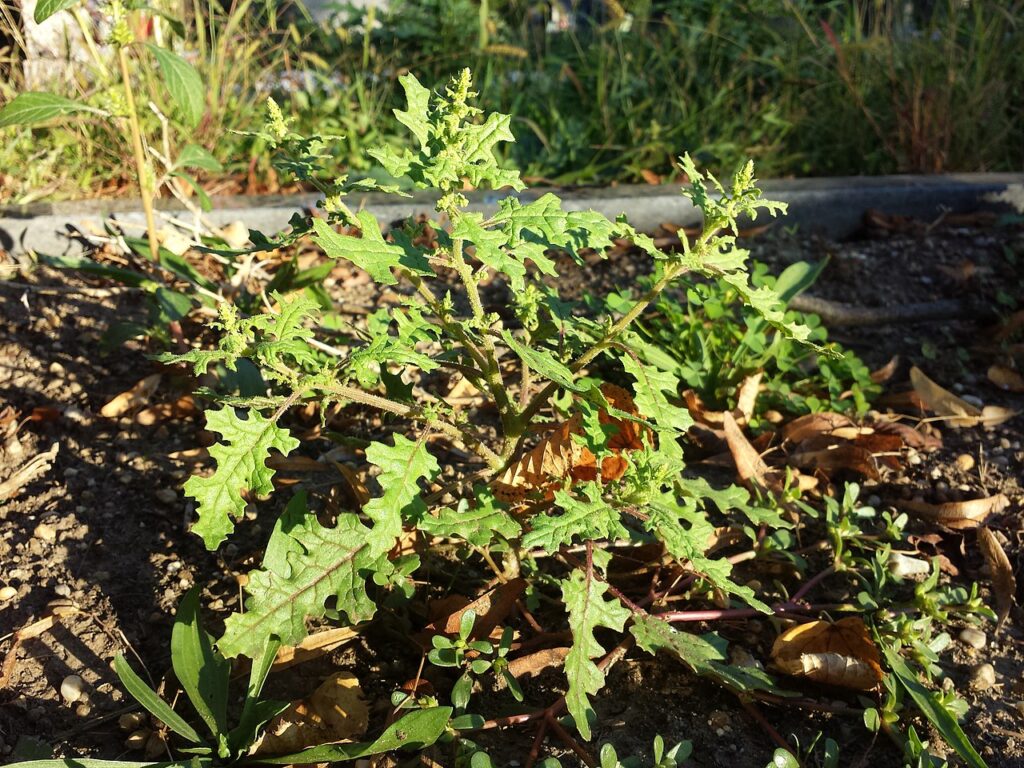
Dysphania botrys or Jerusalem oak goosefoot
The annual plant is from the Mediterranean and growing to 0.6 m (2ft). It has a strong scent, reminiscent of stock cubes, and can be used as a flavouring in cooking. It is cultivated as a hardy annual by gardeners. (info Wikipedia)
The leaves and seeds of all members of this genus are more or less edible.
However, many of the species in this genus contain saponins, though usually in quantities too small to do any harm. The plants also contain some oxalic acid, which in large quantities can lock up some of the nutrients in the food. However, even considering this, they are very nutritious vegetables in reasonable quantities. Cooking the plants will reduce their content of oxalic acid.
- Leaves – cooked or raw. The raw leaves should only be eaten in small quantities, see the notes above on toxicity.
- The leaves are a tea substitute
- Seed – cooked. It can be ground into a meal and used with flour in making bread etc. The seed is small and fiddly, it should be soaked in water overnight and thoroughly rinsed before it is used in order to remove any saponins.
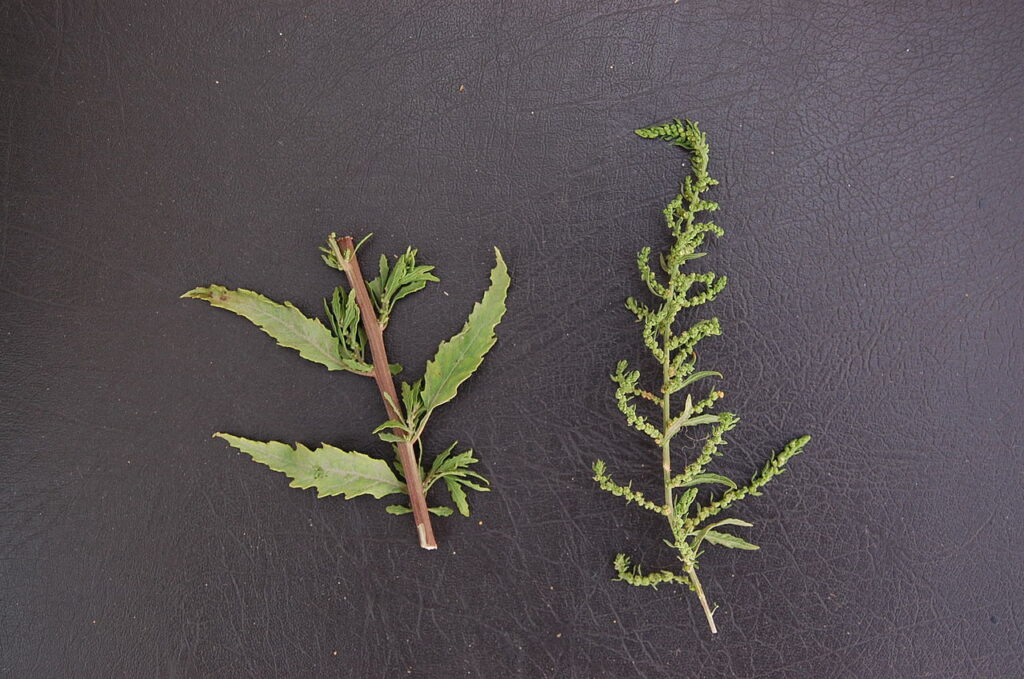
D. ambrosioides (Syn. Chenopodium ambrosioides) or Jesuit’s tea
This is an annual or short-lived perennial herb native to Central America, South America, and southern Mexico.
C. ambrosioides was cultivated in Britain by 1640, which makes it a neophte. It was known in the wild by 1876 (Glamorgan), but is now rare.
Ideally collected before going to seed, D. ambrosioides is used as a leaf vegetable, herb, and herbal tea for its pungent flavor. Raw, it has a resinous, medicinal pungency, similar to oregano, anise, fennel, or even tarragon, but stronger.
The fragrance of D. ambrosioides is strong and unique. A common analogy is to turpentine or creosote. It has also been compared to citrus, savory, and mint.
Although it is traditionally used with black beans for flavor and its antiflatulent properties, it is also sometimes used to flavor other traditional Mexican dishes: it can be used to season quesadillas and sopes (especially those containing huitlacoche), soups, mole de olla, tamales with cheese and chili peppers, chilaquiles, eggs and potatoes, and enchiladas. It is often used as an herb in fried white rice, and it is an important ingredient for making the green salsa for chilaquiles.
Warning:
Humans have died from overdoses of D. ambrosioides essential oils (attributed to the ascaridole content). Symptoms include severe gastroenteritis with pain, vomiting, and diarrhea.
The essential oils of D. ambrosioides contain terpene compounds, some of which have natural pesticide capabilities. The terpene compounds, also delivers partial protection to nearby plants simply by masking their scent to some insects, making it a useful companion plant. Its small flowers may also attract some predatory wasps and flies.
But the compound ascaridole inhibits the growth of nearby species, so it is best to grow it at a distance from other plants.
The ‘Chenopodium spp’. or Goosefoots
Chenopodium has now split into 5 genera: Chenopodium, Lipandra, Chenopodiastrum, Oxybasis and Blitum
A list comparing Chenopdium species with their edible and medicinal ratings can be found on the PFAF website!
The Wildflower Key describes the following 9 species:
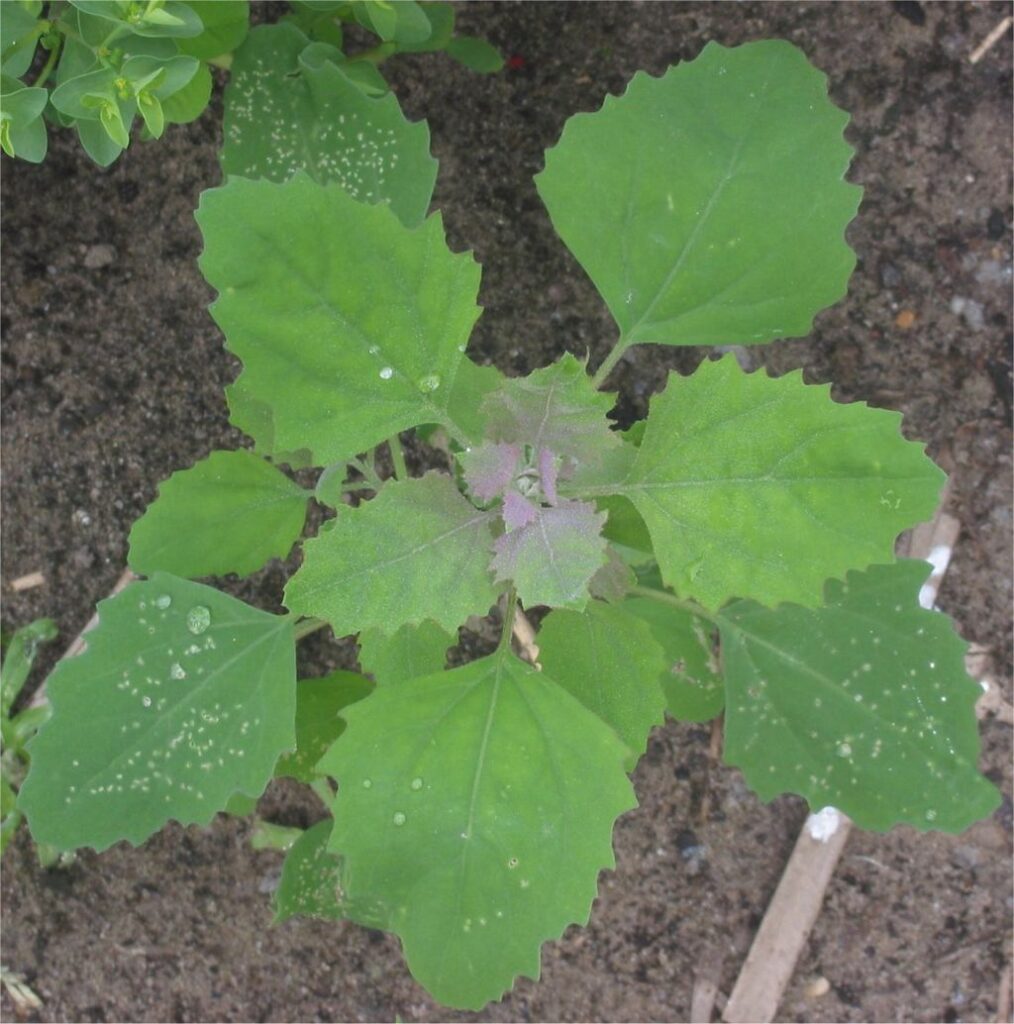
Chenopodium album agg. or Fat Hen
Annuals of disturbed, nutrient-rich habitats, including cultivated fields and gardens, manure heaps, waste ground, rubbish tips and soil heaps. Copious seed is produced, resulting in a long-lived seed bank. There are eight species in the aggregate, but C. album is by far the commonest.
Warning:
Many of the Chenopodium spp. contain saponins which are toxic. But saponins are poorly absorbed by the body and most pass straight through without any problem. They are also broken down to a large extent in the cooking process.
Fat Hen also contain some oxalic acid, which in large quantities can lock up some of the nutrients in the food, but these plants are very nutritious vegetables in reasonable quantities. Cooking the plant will reduce its content of oxalic acid. People with a tendency to rheumatism, arthritis, gout, kidney stones or hyperacidity should take especial caution if including this plant in their diet since it can aggravate their condition. There is also a report that very large quantities of the leaves have caused photosensitivity in some people. Only the raw leaves can cause problems, and then only if large quantities are consumed.
A further report says that if the plant is grown in soils that contain too much nitrates then the plant can concentrate these substances in the leaves. Nitrates have been shown to cause many health problems including stomach cancers and blue-baby syndrome. In nitrogen-rich soils, the plants can also concentrate hydrogen cyanide. In small quantities, hydrogen cyanide has been shown to stimulate respiration and improve digestion, it is also claimed to be of benefit in the treatment of cancer. In excess, however, it can cause respiratory failure and even death.
Leaves can be eaten; best cooked. A very acceptable spinach substitute. The leaves are generally very nutritious but very large quantities can disturb the nervous system and cause gastric pain. The seed can be dried and ground into a meal and eaten raw or baked into a bread. The seed can also be sprouted and added to salads. The seed should be soaked in water overnight and thoroughly rinsed before being used in order to remove any saponins. The young inflorescences can be cooked and is a tasty broccoli substitute[K].
Fat hen is not employed in herbal medicine, though it does have some gentle medicinal properties and is a very nutritious and healthy addition to the diet.
- An infusion is taken in the treatment of rheumatism.
- The leaves are applied as a wash or poultice to bug bites, sunstroke, rheumatic joints and swollen feet, whilst a decoction is used for carious teeth.
- The seeds are chewed in the treatment of urinary problems and are considered useful for relieving the discharge of semen through the urine.
- The juice of the stems is applied to freckles and sunburn.
- The juice of the root is used in the treatment of bloody dysentery
The following 3 species are all annual (archaeophyte) of disturbed, nutrient-rich ground. See more in the links provided.
Chenopodium ficifolium or Fig-leaved goosefoot
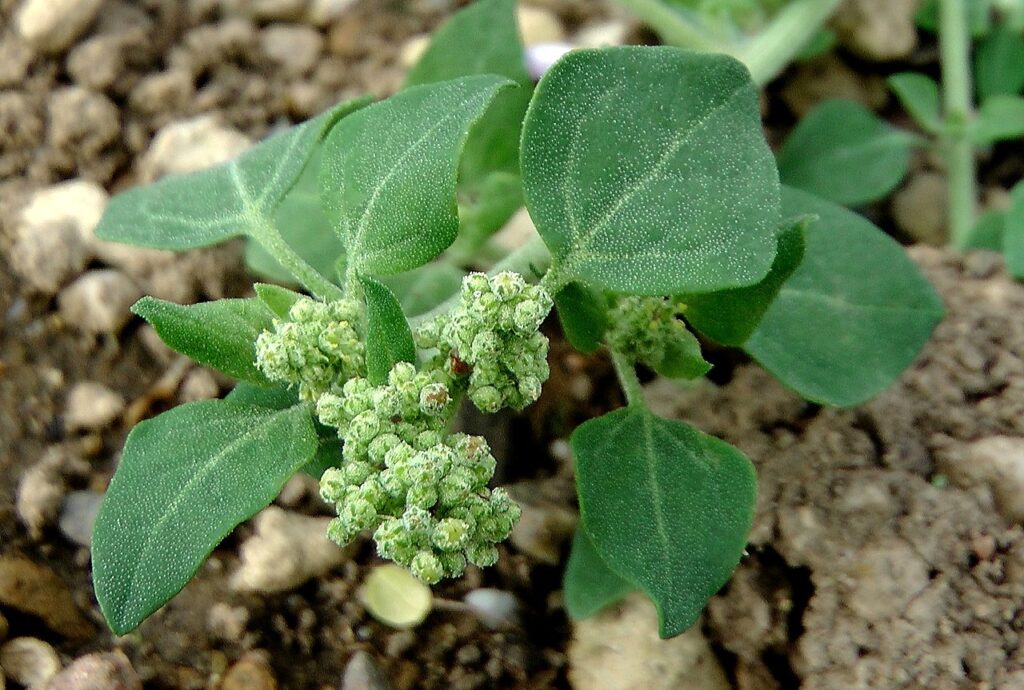
C. vulvaria or Stinking Goosefoot
A ‘stinking’, often prostrate annual of disturbed, nutrient-rich soil on sandy shingle beaches, sand dunes and coastal cliffs, where the soil is enriched by the droppings of sea-birds. It was formerly a ruderal of places enriched with animal dung. Archaeophyte.
- Leaves and flower buds can be cooked and used like spinach. The smell of the leaves would discourage most people from using this plant[K].
- Seed may be cooked. Ground into a powder, mixed with wheat or other cereals and used in making bread etc. The seed is small and fiddly, it should be soaked in water overnight and thoroughly rinsed before it is used in order to remove any saponins.
- Used to expel worms from the bowel.
- Also used for the fungal infections and as a cardiac stimulant.
- Form of treatment for acute gout .
- An infusion of the dried leaves is used in the treatment of hysteria and nervous troubles connected with women’s ailments.
- In Chinese Medicine the oil of this plant is used for rheumatism, eczema and bites

C. bonus-henricus or Good King Henry
A perennial, forming patches on disturbed, nutrient-rich soil around farm buildings and ruins, and on roadsides and waste ground. It also sometimes occurs in limestone grassland. An Archaeophyte
- The cooked leaves make an acceptable spinach substitute, but are best mixed with nicer leaves[K].
- Easy plant to grow as an alternative perennial vegetable.
- The leaves are a good source of iron. Cropping can begin in spring. Some of the new shoots can be thinned out as they appear (usually from mid spring to early summer) and cooked like asparagus. All cutting should then cease so that shoots are allowed to develop. The succulent triangular leaves may be harvested a few at a time until the end of August and cooked like spinach.
- Young flowering shoots may be cooked or steamed. When grown on good soil, the shoots can be as thick as a pencil.
- A poultice of the leaves has been used to cleanse and heal chronic sores, boils and abscesses.
- The seed is a gentle laxative that is suitable for children.
Gold/green dyes can be obtained from the whole plant.
Oxybasis glauca or Oak-leaved Goosefoot
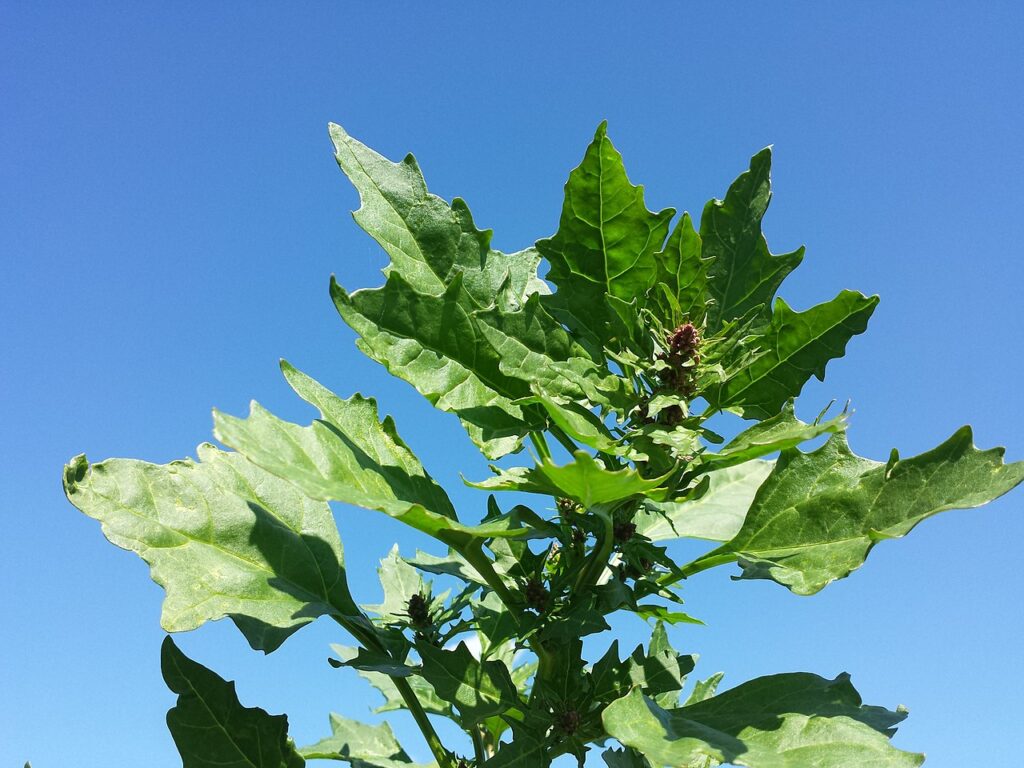
Oxybasis rubra or Red Goosefoot
An annual of nutrient-rich mud around the dried-up margins of freshwater or brackish ponds and ditches trampled by livestock; also, more widely, in cultivated and waste ground, on manure heaps and farm tracks and in field gateways.
Oxybasis chenopodioides or Saltmarsh Goosefoot
A native annual of dry, brackish mud of ditches, salt-pans and hoof-marks in the upper part of saltmarshes and in coastal grazing marshes. Since the 1962 Atlas, there has been no change in the distribution of C. chenopodioides in its core area of the Thames estuary, but it seems to have become extinct in Suffolk and Norfolk.
Chenopodiastrum murale or Nettle-leaved Goosefoot
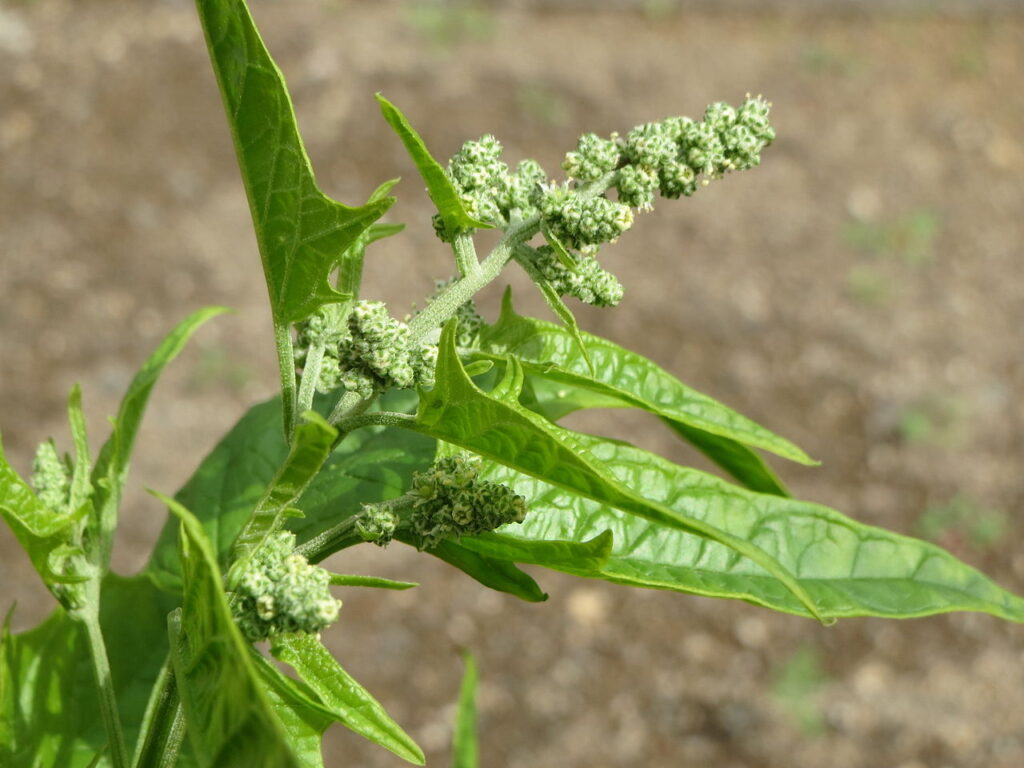
Chenopodiastrum hybridum or Maple-leaved Goosefoot
An annual of disturbed, nutrient-rich arable land and waste ground. It is a characteristic weed of humus-rich cultivated soils in the Fens. An Archaeophyte.
Similar use as above species.
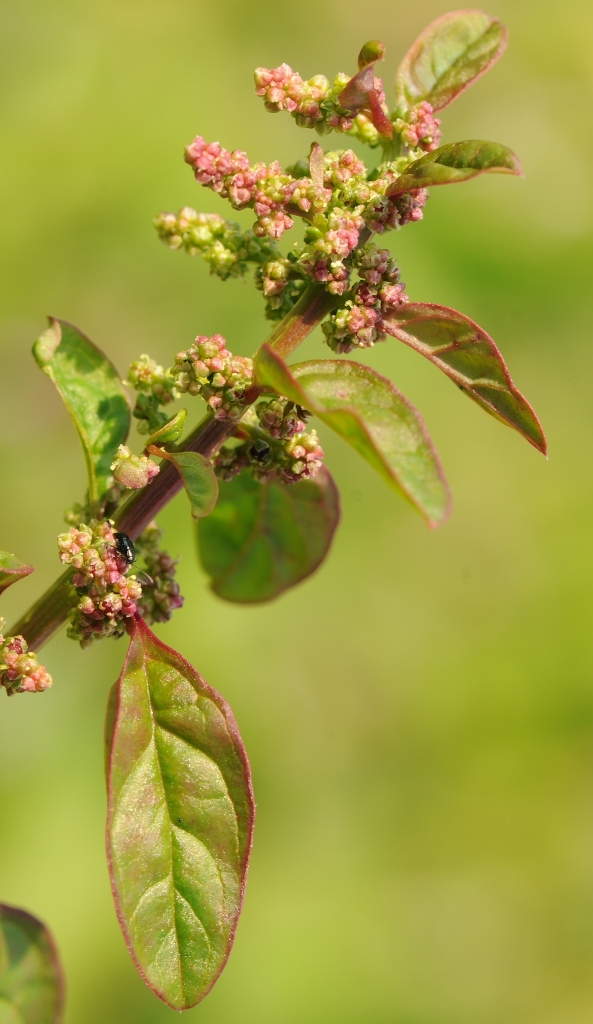
Lipandra polysperma or Many-seeded Goosefoot
An annual (archaeophyte) of disturbed cultivated ground, including gardens, especially on light, nutrient-rich soils. It has also been recorded on bare peat, on disturbed soil in newly coppiced woodland and in dried up ponds.
Salicornia and Sarcocornia or Glassworts
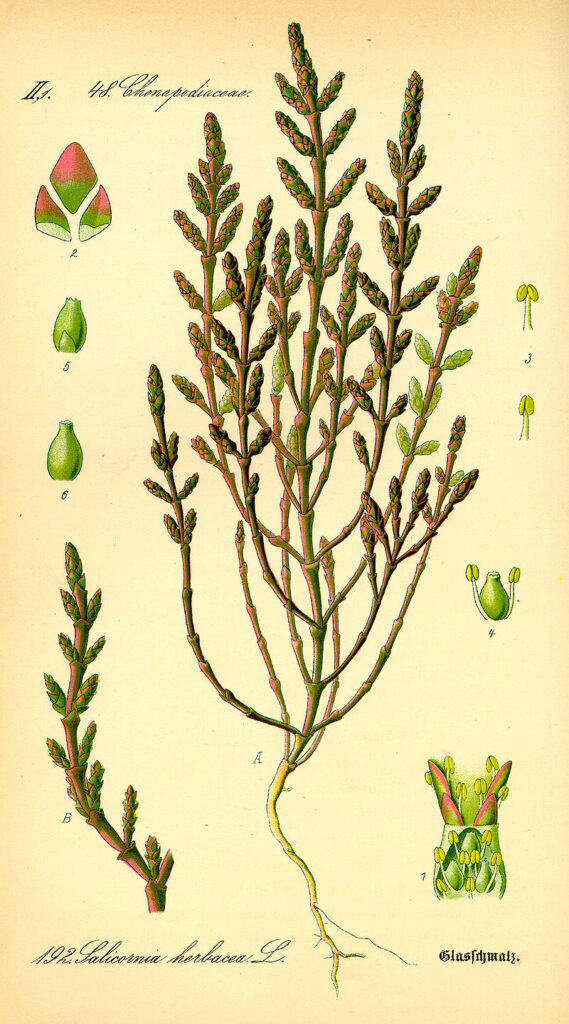
These are strange looking herbs. The main stem and the branches are succulent and jointed into swollen segments.
There are many species of Salicornia and they are very variable so difficult to identify according to the Wildflower Key. The broad groups are:
Salicornia ramosissima or Purple Glasswort
This morphologically highly variable annual is usually found in the middle and upper zones of saltmarshes, in closed Puccinellia maritima swards, salt-pans, creeks and drift-lines. It also occurs on firm sand and muddy shingle, and behind sea-walls in open areas of brackish grazing marsh. Ball & Tutin (1959) note that this species occurs `in all parts of saltmarshes except the lower mud-flats`.
- Young stems – raw or cooked as a potherb, added to soups etc. The stems are very succulent, but have a thin woody core that is easily removed. They are best harvested when about 15cm long, the top 10cm being used leaving the bottom 5cm to produce new shoot. They require little cooking, just adding them to a soup for the last few minutes of cooking is sufficient. The plant has a salty flavour and makes a very pleasant raw nibble[K].
- The young shoots can be pickled after first boiling them in their own salted water.
- Seed is rich in protein, but rather small and fiddly to utilize[K].
- An edible oil is obtained from the seed. A high quality, it is similar to safflower oil (Carthamnus tinctoria)[183].
Other Uses:
The ashes obtained from burning this plant are rich in potash and are used in making soap or glass. The ashes can also be used as a soap.
Salicornia procumbens agg or Yellow Glasswort
An annual largely restricted to open mud and muddy sand on intertidal flats and in the lowest parts of saltmarshes.
Salicornia europaea or Common Glasswort
An annual found at all levels of sandy or muddy saltmarshes, in saltmarsh-sand dune transitions and wet, tidally inundated dune-slacks; also, more rarely, in relict saltmarsh and other open saline areas behind sea-walls. Halliday (1997) notes that in Cumbria S. europaea is probably the only Salicornia species able to persist on grazed marshes.
Edible Uses: (See also Purple Glasswort above)
Salicornia europaea is edible, either cooked or raw. In the UK, it is one of several plants known as samphire (see also rock samphire); the term samphire is believed to be a corruption of the French name, herbe de Saint-Pierre, which means “St. Peter’s herb”
Samphire is usually cooked, either steamed or microwaved, and then coated in butter or olive oil. Due to its high salt content, it must be cooked without any salt added, in plenty of water. After cooking, it resembles seaweed in colour, and the flavour and texture are like young spinach stems, asparagus, or artichoke. Samphire is often used as a suitably maritime accompaniment to fish or seafood.
The ashes of glasswort and saltwort plants (barilla) and of kelp were long used as a source of soda ash (mainly sodium carbonate) for glassmaking and soap making. The introduction of the Leblanc process for the industrial production of soda ash in the first half of the 19th century superseded the use of plant sources.
S. perennis
Salicornia pusilla or One-flowered Glasswort
An annual restricted to the uppermost parts of saltmarshes, growing on firm mud or sand in salt-pans and on the drift-line; also behind sea-walls in areas subject to saltwater seepage and kept open by vehicles or livestock.
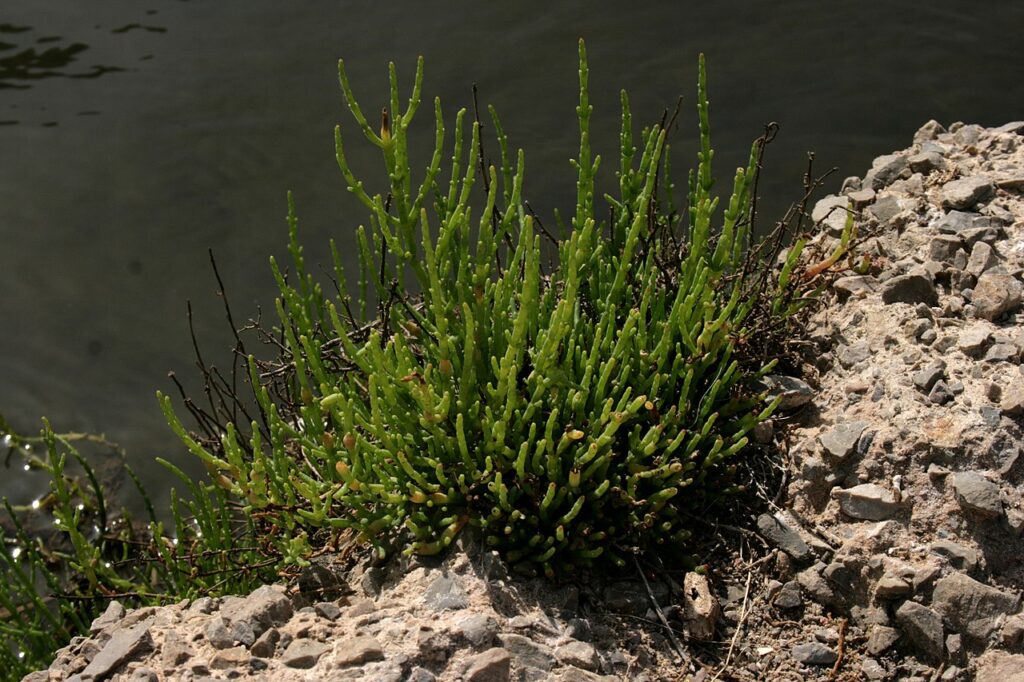
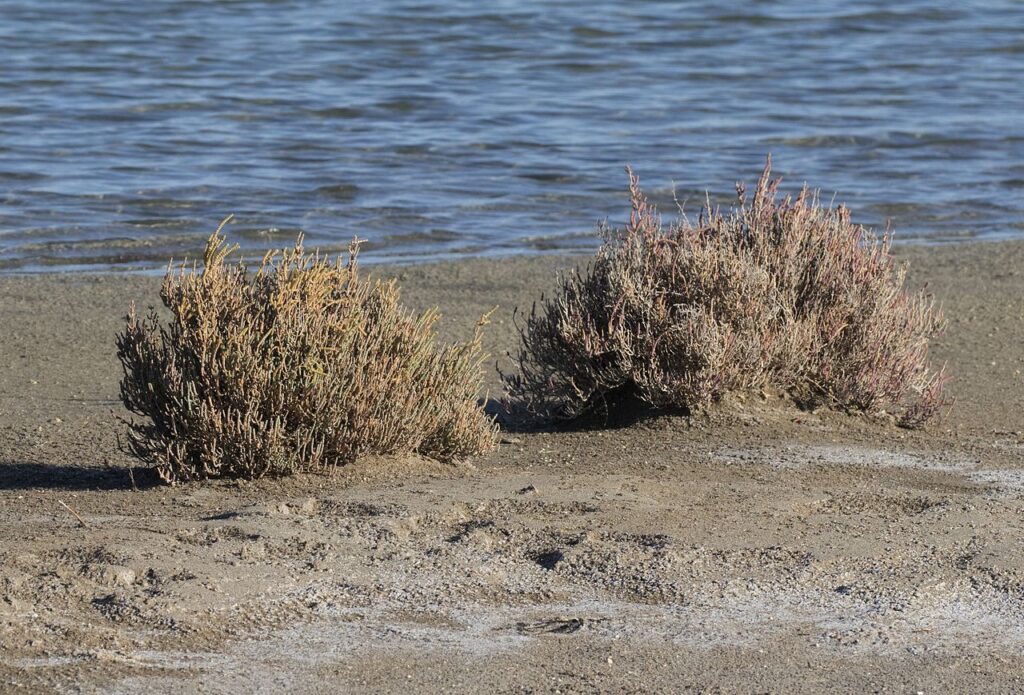
Sarcocornia perennis or Perennial Glasswort
A woody perennial subshrub of saltmarshes, especially in bare or sparsely vegetated areas on firm, muddy sand and gravel. S. perennis occurs on eroding lower parts of saltmarshes, at higher elevations on saltmarsh drift-lines and on shell and shingle banks; sometimes also on bare ground behind sea-walls.
Leaves and stems can be cooked or pickled
S. maritima
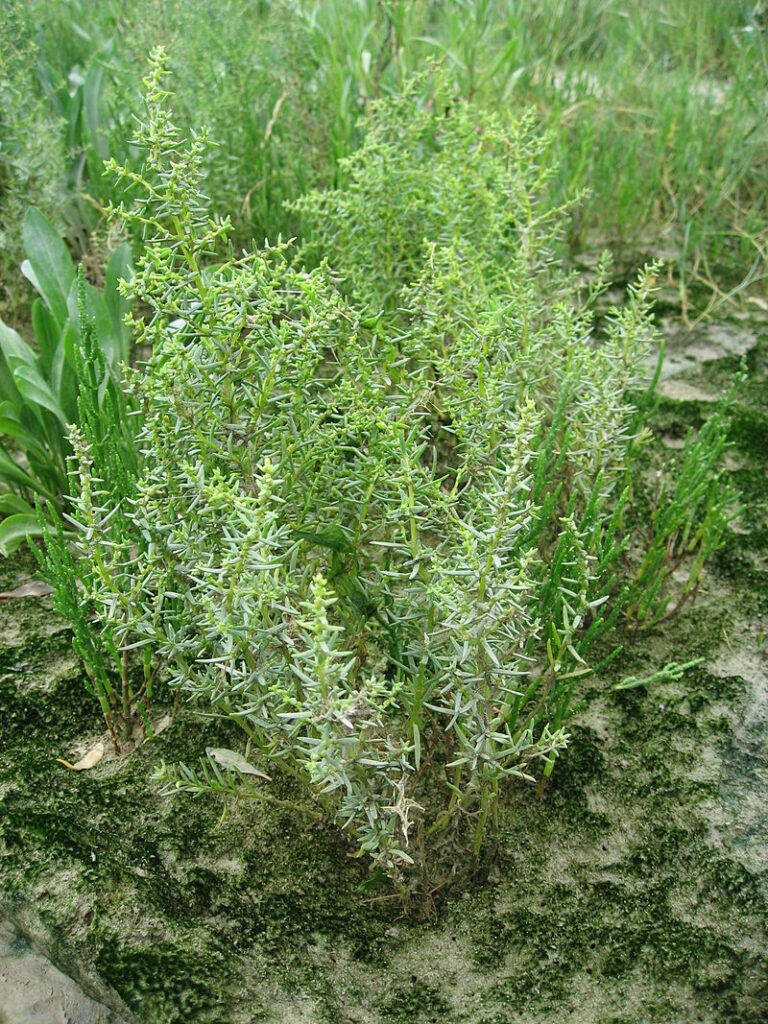
Suaeda maritima or Annual Sea-blite
An annual found in the middle and lower parts of saltmarshes, often with Salicornia species. It is an early colonist of intertidal mud- and sand-flats, sometimes also occurring higher up in salt-pans and drift-lines, on shell and shingle banks, and in thinly vegetated brackish areas behind sea-walls.
- Young leaves – raw or cooked. A pleasant salty flavour, they make a nice addition in small quantities to a salad[K]. They are often mixed with other vegetables in order to reduce their saltiness.
- The young shoots are pickled in vinegar and eaten on their own or used as a relish.
- Seed – raw or cooked.
The ashes of the plant provide a soda that is used in making glass and soap.
S. vera
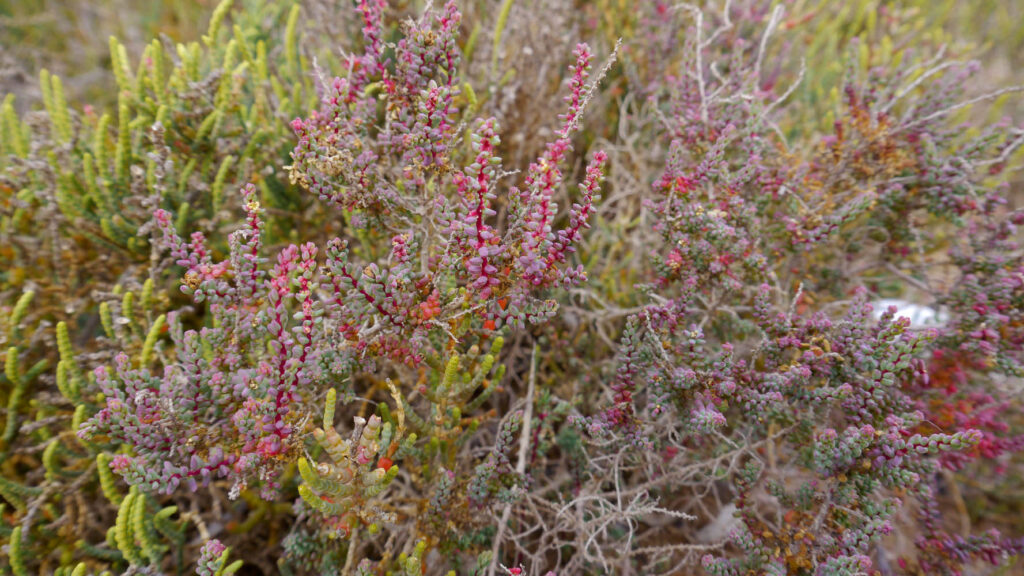
Suaeda vera or Shrubby Sea-blite
An evergreen shrub of shingle drift-lines and the dry upper zones of saltmarshes, especially where these adjoin shingle banks or sand dunes; also along sea-wall drift-lines and, more rarely, beside brackish creeks and ditches in coastal grazing marshes.
- Young leaves – raw or cooked. A salty flavour[K].
- Seed – raw or cooked
The leaves are used as a poultice in the treatment of ophthalmia. When infused in water, they have been used as an emetic.
References More on Medicinal Uses
The plant is rich in potassium and is often burnt as a source of potash for making soap and glass.
S. kali
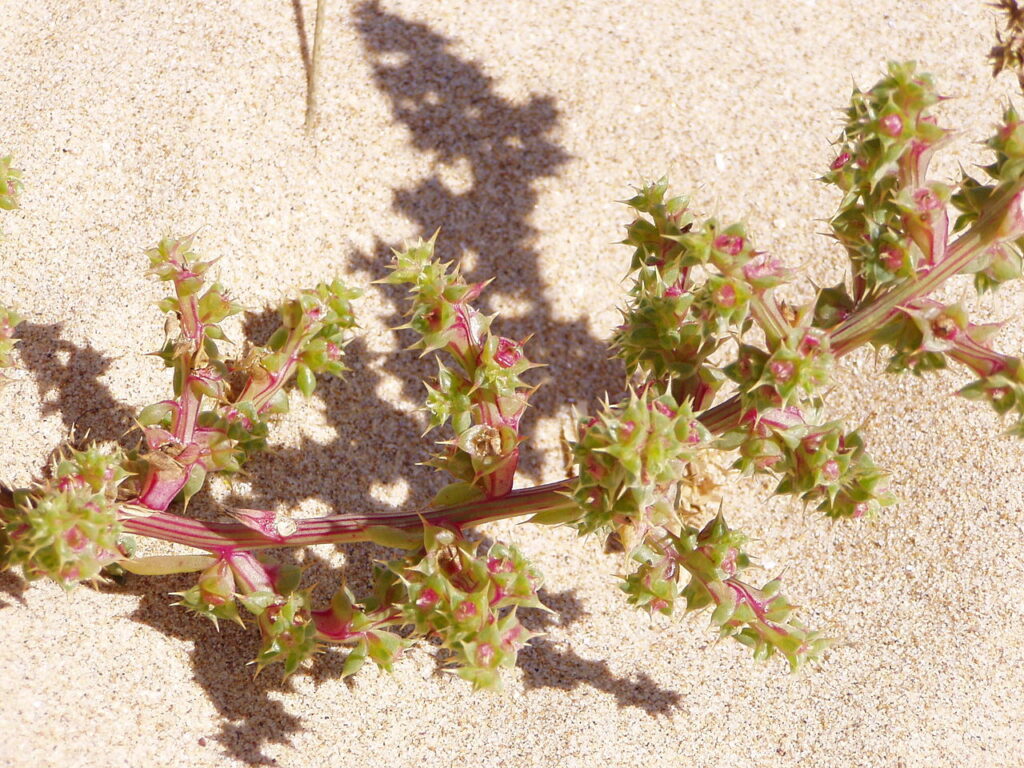
Salsola kali or Prickly Saltwort
The Online Atlas describes also another subsp. of S. kali subsp. ruthenica
A somewhat woody annual of sand and shingle beaches, usually on the drift-line with Atriplex laciniata, Cakile maritima and Honckenya peploides as typical associates.
The plant contains up to 5% oxalic acid, so it should only be used in moderation. Oxalic acid can lock up certain of the nutrients in food and, if eaten in excess, can lead to nutritional deficiencies. It is, however, perfectly safe in small amounts and its acid taste adds a nice flavour to salads. Cooking the plant will reduce the quantity of oxalic acid. People with a tendency to rheumatism, arthritis, gout, kidney stones and hyperacidity should take especial caution if including this plant in their diet since it can aggravate their condition.
- Young leaves and stems – can be eaten raw or cooked. An excellent food with a crunchy tender texture.
- The leaves can be used as a spinach substitute or added in small quantities to salads.
- Seed – cooked. It can be ground into a meal and used as a gruel, thickener in soups etc or added to cereal flours when making bread etc. The seed is small and hard to collect any quantity!
- The juice of the fresh plant is an excellent diuretic. The seedpods can also be used.
- Salsolin, one of the constituents of the plant, has been used to regulate the blood pressure. It is said to resemble papaverine in its effect on vasoconstriction and hydrastine in its effect on the smooth muscles of the uterus.
- The ashes of the burnt plant are used for making glass and soap. At one time large quantities of the ashes were imported into Britain for this purpose, but nowadays a chemical process using salt is employed.
- The ashes can also be used as a cleaner for fabrics. As a low-water-use plant, germinating quickly on minimally disturbed soils, and relatively free of diseases and parasites, this has been suggested as a fuel source for arid lands. Yields of around 3 tonnes per hectare of plant material have been achieved.
- Dynamic accumulator.
S. tragus
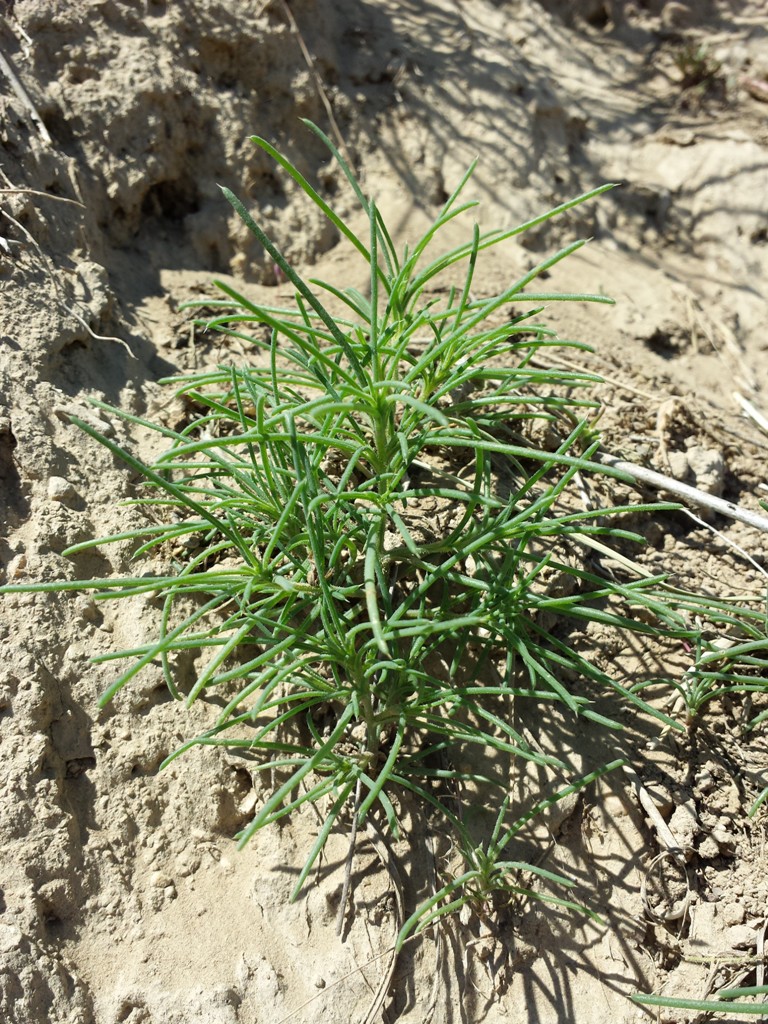
Salsola tragus or Prickly Russian Thistle
It is widely known, in many regions of the United States, simply as tumbleweed because it is the most common and most conspicuous plant species that produces tumbleweeds.
Some varieties of Russian thistle can contain above average levels of oxalic acid, particularly in older plants, and people who are sensitive to oxalic acid should avoid the genus as it is a severe allergen for some people. People who have adverse reactions to eating spinach, which also can have high levels of oxalates, should avoid consumption of Russian thistle
- The plant is considered edible when young, and the young shoots can be harvested and eaten. The young shoots can be eaten raw in salads, and are reported to be even more flavorful when cooked as a pot herb.
- Young plants are also reported as good fodder for livestock.
Atriplex spp.

Atriplex spp. or Oraches
The generic name originated in Latin and was applied by Pliny the Elder to the edible oraches. The name saltbush derives from the fact that the plants retain salt in their leaves; they are able to grow in areas affected by soil salination.
Stace mentions 15 species and several hybrids and many are native. I will list the species mentioned in the Wild Flower Key below and their known uses:
A. patula
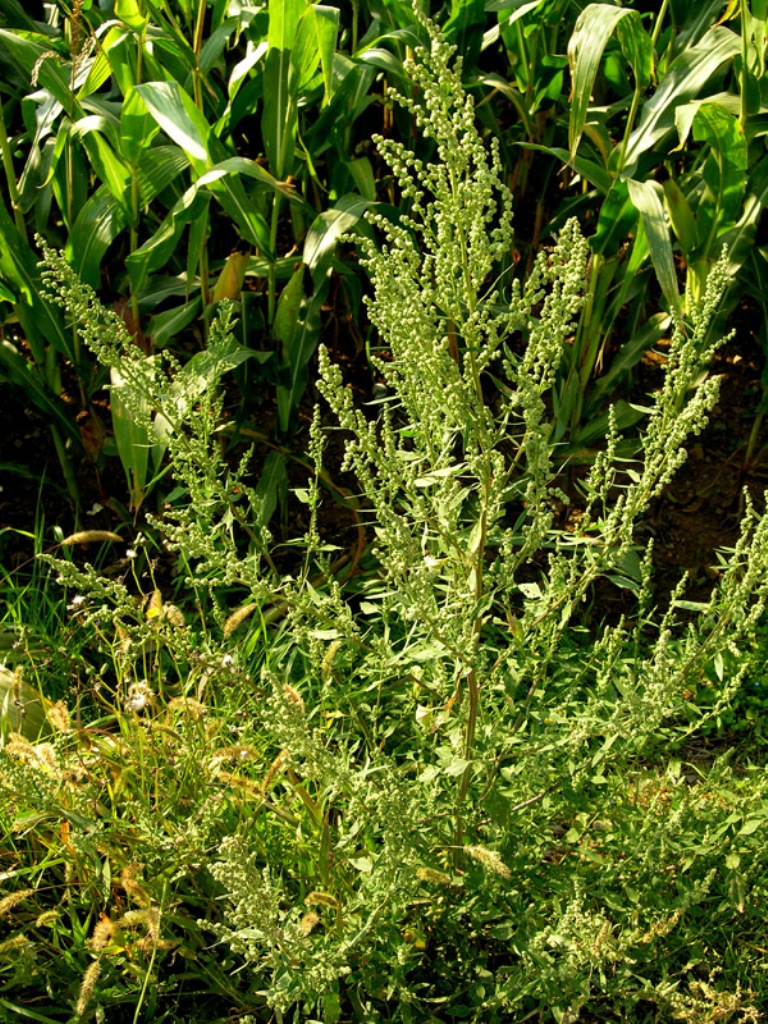
A. patula or Common Orache and PFAF
An annual of cultivated ground, manure heaps, roadsides, rubbish tips and waste places in towns and cities; also on fertile soils in a wide range of disturbed semi-natural habitats, such as river banks, pond margins and sea-bird cliffs. A. patula is frequent in coastal waste places but rare in littoral zone habitats such as saltmarshes and sand and shingle drift-lines.
Young leaves – raw or cooked as a spinach substitute. A fairly bland flavour, a few leaves of stronger-flavoured plants can be added to enhance the taste. Seed – ground and mixed with cornmeal or used to thicken soups etc. Small and very fiddly to harvest and use!
The seeds, harvested when just ripe, are said to be as efficacious as ipecacuanha as a laxative.
- A. littoralis or Grass-leaved Orache
- A. glabriuscula or Babington’s Orache
- A. longipes or Long-stalked Orache
- A. laciniata or Frosted Orache
A. portulacoides
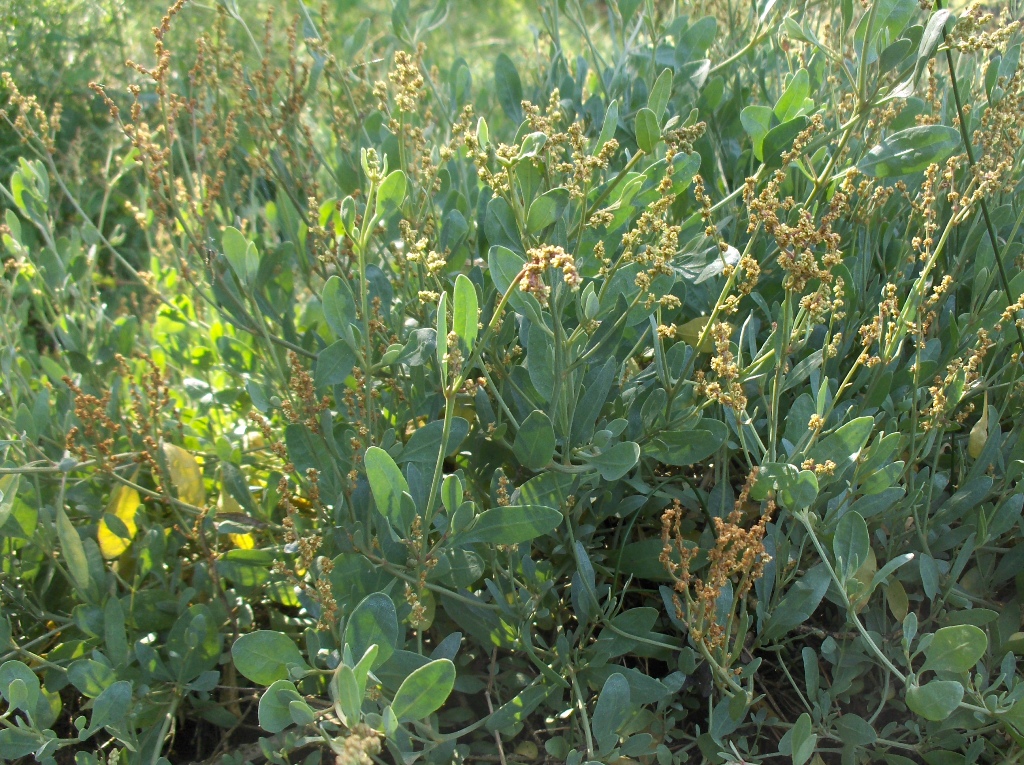
A. portulacoides or Sea-purslane and PFAF
A low shrub of muddy or sandy saltmarshes, commonly fringing intertidal pools and creeks, and often forming extensive stands on ungrazed saltings. In W. Britain and Ireland it also occurs locally on coastal rocks and cliffs.
Leaves – raw in salads or cooked as a potherb. Thick and succulent with a good crunchy texture and a natural saltiness. They need careful washing when collected from the wild
B. vulgaris
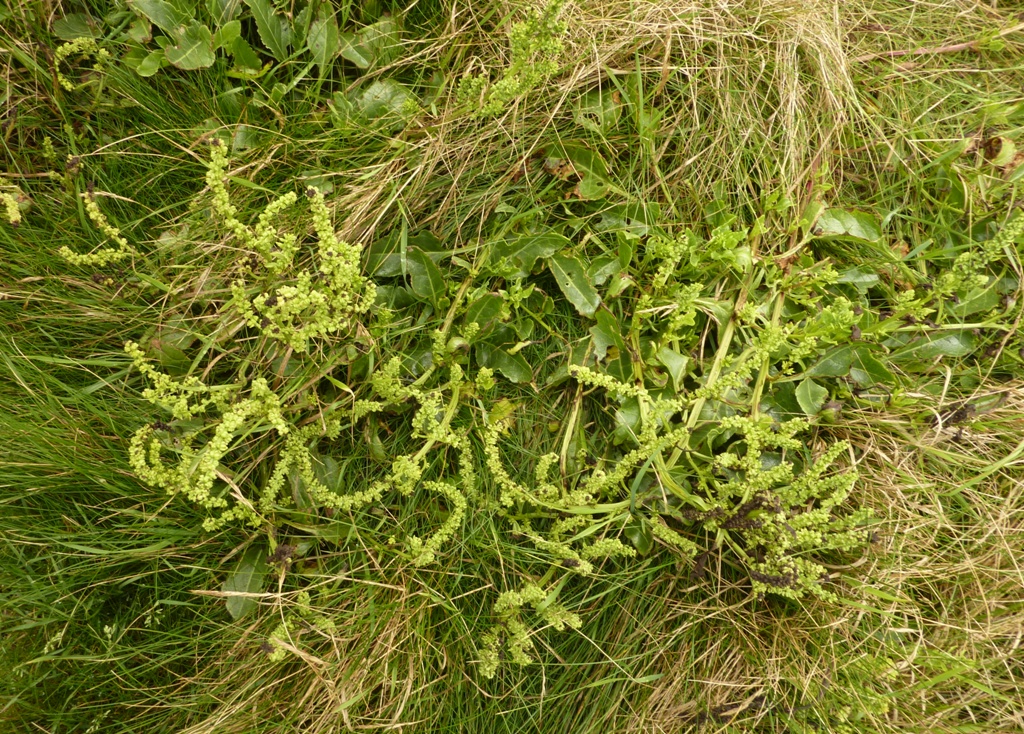
Beta vulgaris or Sea Beet
B. vulgaris subsp. maritima: B. vulgaris subsp. cicla; B. vulgaris subsp. vulgaris
Young leaves can be eaten raw or cooked. A delicious spinach substitute in the spring, the leaves become less pleasant as the season progresses, developing a distinct bitterness in hot weather[K]. Some people dislike the raw leaves since they can leave an unpleasant taste in the mouth.
A list of modern and traditional uses are:
- A decoction prepared from the seed has been used as a remedy for tumours of the intestines.
- The seed, boiled in water, is said to cure genital tumours.
- The juice or other parts of the plant is said to help in the treatment of tumours, leukaemia and other forms of cancer such as cancer of the breast, oesophagus, glands, head, intestines, leg, lip, lung, prostate, rectum, spleen, stomach, and uterus. Some figure that betacyanin and anthocyanin are important in the exchange of substances of cancer cells; others note two main components of the amines, choline and its oxidation product betaine, whose absence produces tumours in mice.
- The juice has been applied to ulcers.
- A decoction is used as a purgative by those who suffer from haemorrhoids in South Africa.
- Leaves and roots used as an emmenagogue.
- Plant effective in the treatment of feline ascariasis.
In the old days, beet juice was recommended as a remedy for anaemia and yellow jaundice, and, put into the nostrils to purge the head, clear ringing ears, and alleviate toothache. Beet juice in vinegar was said to rid the scalp of dandruff as scurf, and was recommended to prevent falling hair. Juice of the white beet was said to clear obstructions of the liver and spleen. Culpepper (1653) recommended it for treating headache and vertigo as well as all affections of the brain.
Amaranthus spp. or Pigweeds
Amaranthus is a cosmopolitan genus of annual or short-lived perennial plants collectively known as amaranths.
This genus which the family is named after has 17 species described in Stace but they are all introduced annual herbs and not easy to identify the various species for which one needs a mature, fruiting plant.
Some amaranth species are cultivated as leaf vegetables, pseudocereals, and ornamental plants. Most of the Amaranthus species are summer annual weeds and are commonly referred to as pigweeds.
The Wild Flower Key just mentions one species:
The Callaloos:

Amaranthus retroflexus or Common Amaranth/Callaloo
other species described in the Flora of Birmingham and the Black Country:
‘These are all Neophytes and frost-tender annual herbs extensively grown in allotments, especially associated with Caribbean cooking when the resultant mixture of closely related species is called ‘Callaloo’ and recommended strongly as a green leaf vegetable. Callaloo appears largely to consist of A. retraflexus and A. hybridus.’
A. hybridus or Green Amaranth, Callaloo
An annual of disturbed, nutrient-rich waste ground, waysides, rubbish tips, market gardens and arable fields. It is usually casual and only very rarely naturalised.
The seeds and cooked leaves are edible. It is among the species consumed as Quelite quintonilli in Mexican food markets.
The plant was used for food and medicine by several Native American groups and in traditional African medicine.
A. ozanonii (A. retraflexus x A. hybridus)
An annual occurring as a casual in fields and around docks. It arises from wool shoddy.
A. caudatus
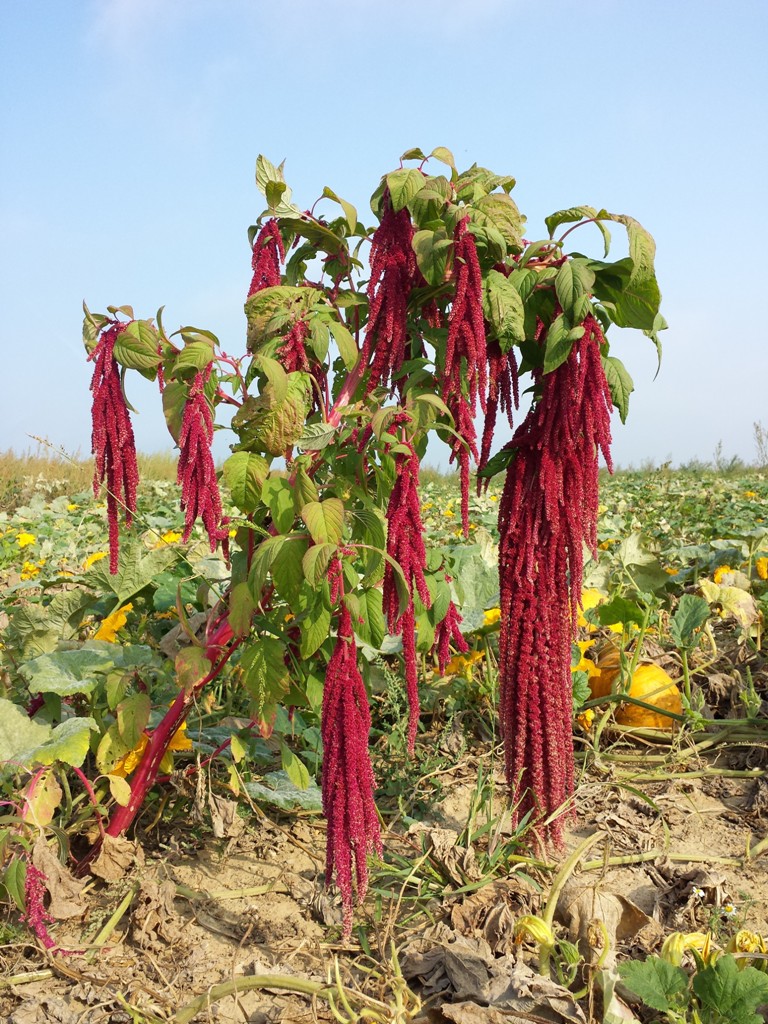
A. caudatus or Love-lies-bleeding
During the Victorian era, specific flowers had different meanings. Love-lies-bleeding stood for hopeless love or hopelessness in the Victorian language of flowers.
The seed is very nutritious and contains 13 – 18% of a very high quality protein that is rich in the amino acid lysine. It also contains good quantities of calcium, phosphorus, iron, potassium, zinc, vitamin E and the vitamin B complex.
- Leaves – raw or cooked as a spinach or added to soups etc. The mild flavoured leaves are rich in vitamins and minerals.
- Seed – cooked. Very small but easy to harvest and very nutritious, individual plants can bear up to 100, 000 seeds.
- It is eaten cooked or ground into a powder and used in baking.
- The seed can also be popped in much the same way as popcorn.
- The seed can be cooked whole, and becomes very gelatinous like this, but it is rather difficult to crush all of the small seeds in the mouth and thus some of the seed will pass right through the digestive system without being assimilated[K].
- A red food colouring called ‘betalaina’ is obtained from red cultivars.
Ornamental Uses:
It is an attractive annual as an unusual border or pot plant and can also be used as a cut flower or dry flower.
A. albus
A. albus or White Pigweed
In Cambodia, the leaves of the plant (which is known as phti sâ, Khmer language), is used as pig-feed, and are sometimes cooked and eaten by people.
- Leaves and young plant – cooked. A mild flavour, it is rich in vitamins and minerals and is used as a spinach[K].
- Seed – raw or cooked. They can be ground into a flour and used to make bread. Very small and fiddly, about 1mm in diameter, but the seed is very nutritious. The seed can be cooked whole, and becomes very gelatinous like this, but it is rather difficult to crush all of the small seeds in the mouth and thus some of the seed will pass right through the digestive system without being assimilated[K].
